Ten days in England (27 June to 7 July 2019)
I tacked ten days onto my holiday in order to go to a garden party in Dulwich on the 5th July. Not wanting to stay in one place all that time, I first of all called in to Ramsgate for the weekend. Having arrived in Heathrow airport from Graz via Vienna, all the baggage except mine circled the carousel. With sinking heart, I reported my bag missing. I was told it was in Vienna and would be forwarded to me, and I provided my Ramsgate address. The upside of this was that I did not have to wrangle my suitcase through the railway system to Ramsgate! When the suitcase arrived 24 hours later, it had clearly been run over at the top end. Luckily only one thing was broken, and not some glass ornaments I had bought at various places. I had to buy a new suitcase.
Lesson: carry a change of clothes and a couple of days-worth of any medications in one’s hand luggage! And phone charger (I had a cable…). As I have been told to do numerous times and didn’t.
While in Ramsgate, by chance the Church of St Laurence was open for visitors. So, I walked up to the church. One of my tenth great grandfathers, Peter Johnson, was Vicar there from 1654 to 1662. He is buried just inside the current vestry door, but his slab is under the carpet. The couple on duty to meet and greet were lovely, we chatted, had a cup of tea, and they showed me a publication on the history of the parish which includes a couple of pages on Peter Johnson. This version of events is that he was dispossessed (of the Parish) for refusing to admit that his ordination was not proper. It was valid according to the rules at the time, but the reforms of 1662 meant that because he was not ordained by a Bishop, he would have to return to study and be ordained ‘properly’. He declined the offer, and thus lost his position. The rest of his life, he ran a small school for boys, attended St Laurence, but also appears to have helped form a dissenting congregation that became the Ebenezer Chapel in Ramsgate.
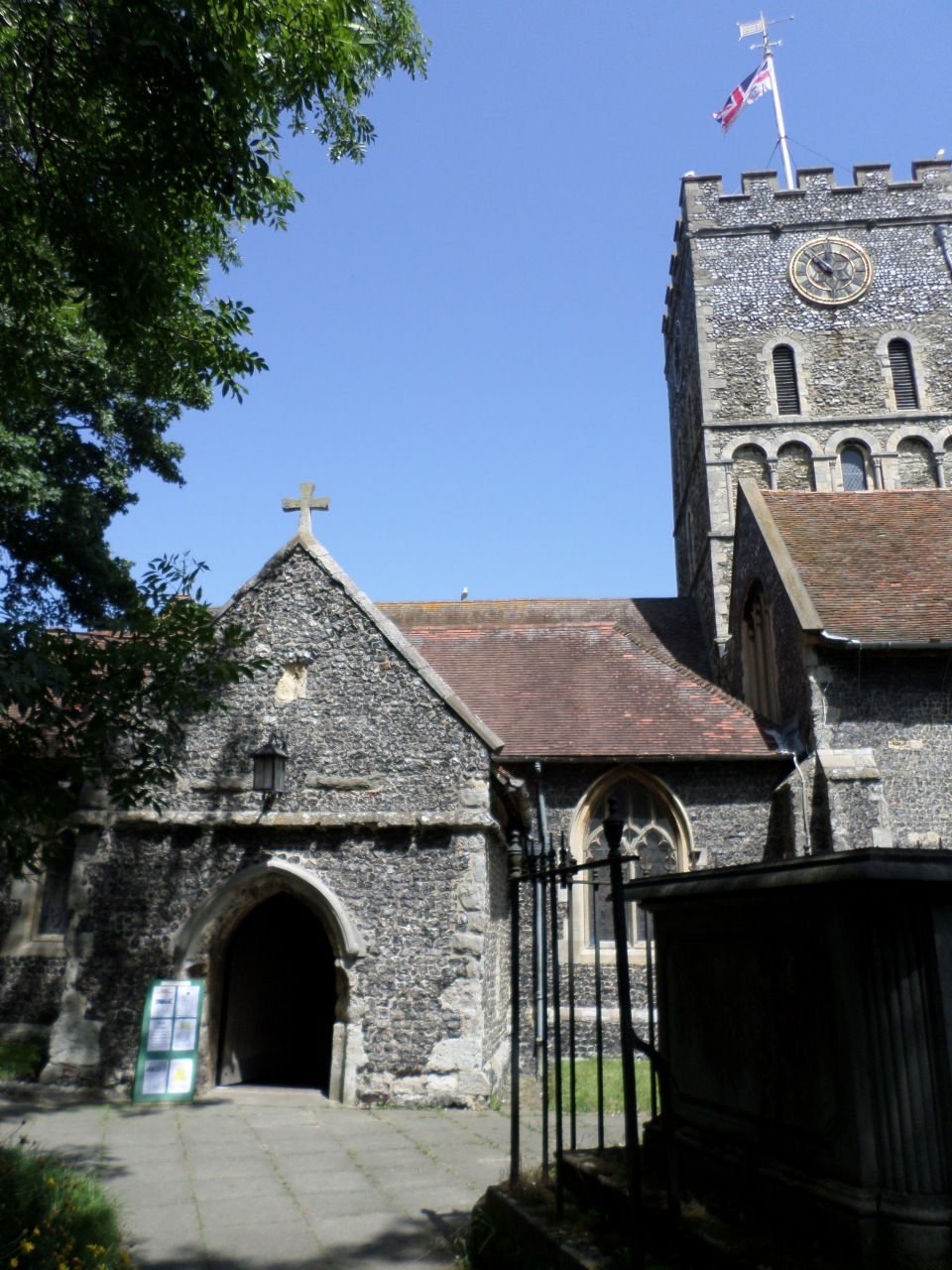
The Church from the gate
I walked back to Ramsgate and lunched at the Harbour. The Armed Services Day parade marched passed while I ate. Complete with a band, current and former servicemen, some Girl Guides and flags.
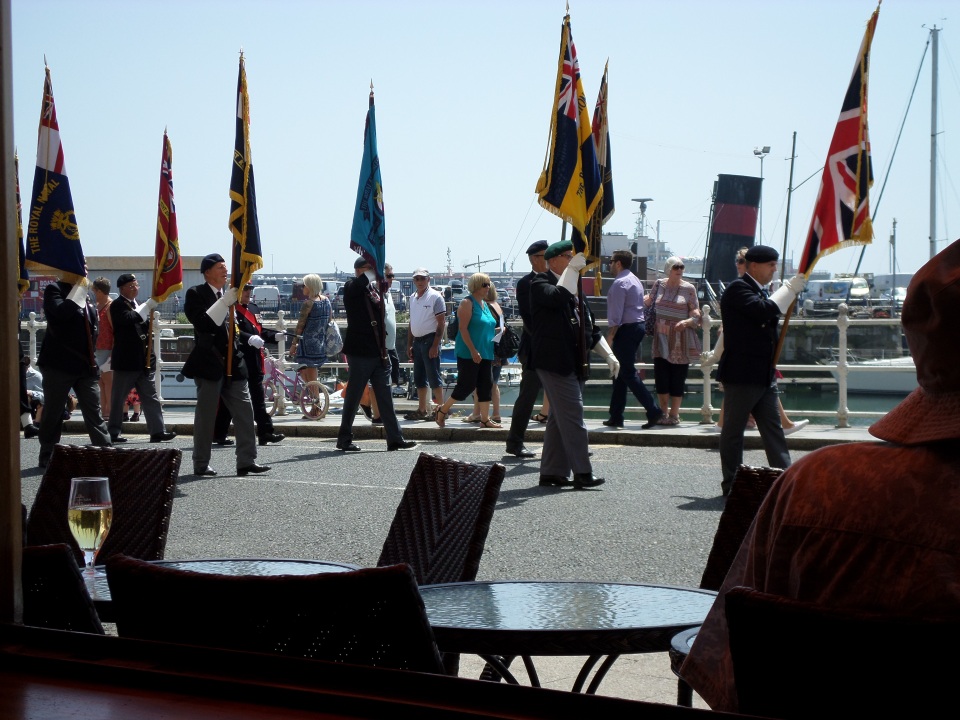
Armed Services Day flags
The following afternoon I walked along the cliffs to the Rose Garden, where there was a garden party to raise money to keep the garden going. It is a lovely sheltered spot with some beautiful plants. While I was in Ramsgate, I met up with a fourth cousin (a Spain connection on my Friend side) to talk genealogy over a cuppa. We are both stuck with our mutual 3xgreat grandmother, unable to find her birth record or parents names, which do not appear in her marriage details because that took place before 1837.
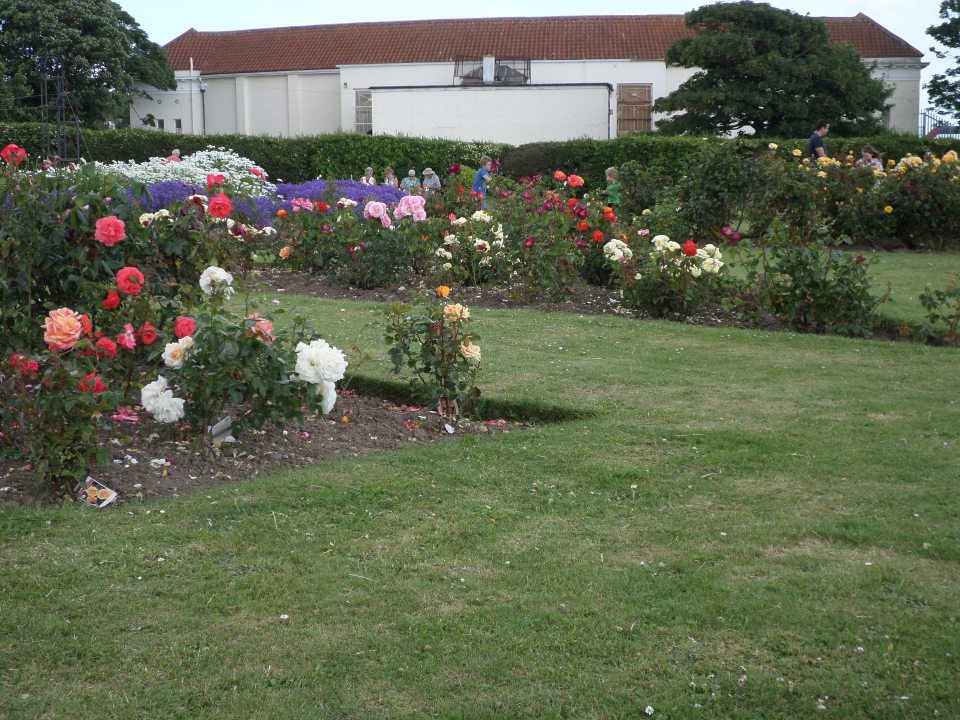
West Cliff Rose Garden
After Ramsgate I travelled to Essex to meet a first cousin once removed (on the Stevenson side), with whom I had got in contact through Ancestry. I stayed at the local pub for a few days, and had a marvellous time getting to know my ‘new’ cousin and her family. Very generously, I was shown round the sights of the area and entertained most hospitably. We went to Colchester Castle, first. The Roman wall round the Roman era settlement is still in evidence, and the Castle is constructed on the base of a Roman Temple, using recycled Roman building materials! We went on a guided tour of the basement (that held up the Roman temple) and up to the battlements.
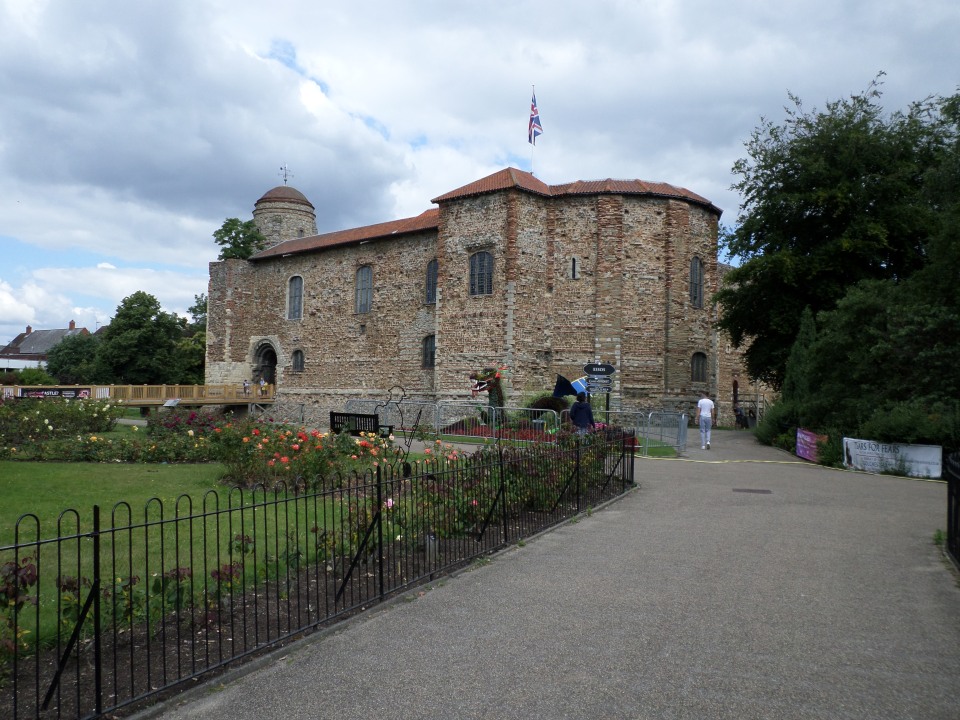
Colchester Castle
We called in at the Tiptree Jam Factory for lunch at their Café. I recognised bits of it, as it was the location used in one of the Midsomer Murders episodes (as a pickle factory). After lunch, we drove through very lush country-side to Maldon, on the Thames estuary. By chance, it was the day that London taxis bring less-fortunate children to Maldon for an annual picnic so the place was decorated with bunting and balloons, as were the taxis lined up in the park.
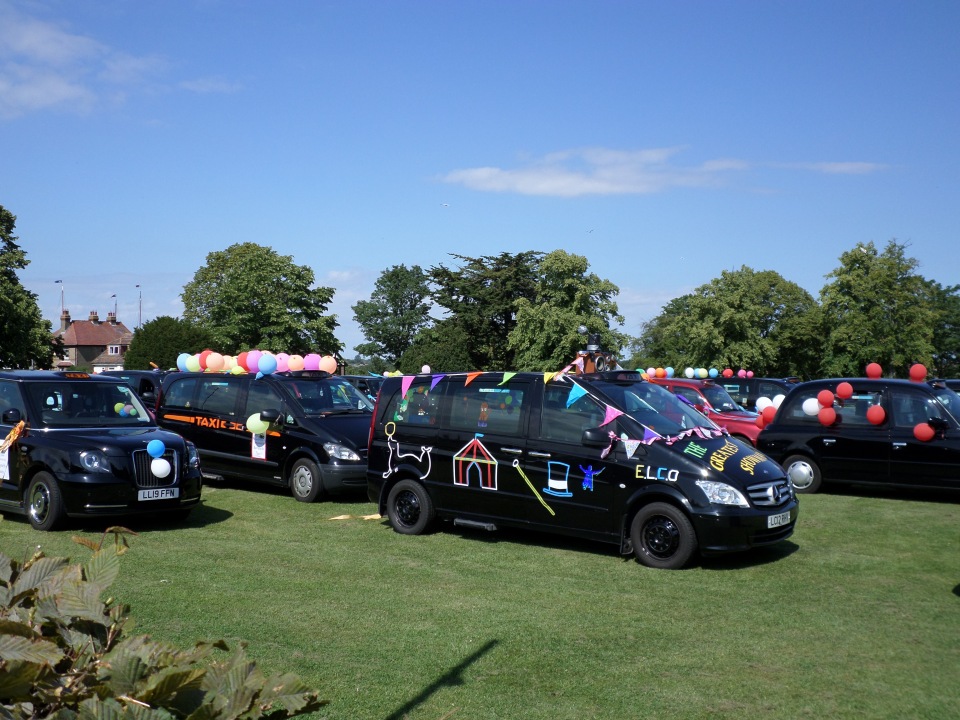
Taxis at Maldon
The river-side park has plenty of room for children to play, with playgrounds and a water park as well as the promenade along the waterside. The promenade ends at a promontory with a statue of a local Saxon hero, Byrhtnoth, who fought off the Vikings at the Battle of Maldon in the late 10th century. Moored at Malden are many Thames barges, with their distinctive red sails. Some of these took part in the evacuation of Dunkirk in WWII.
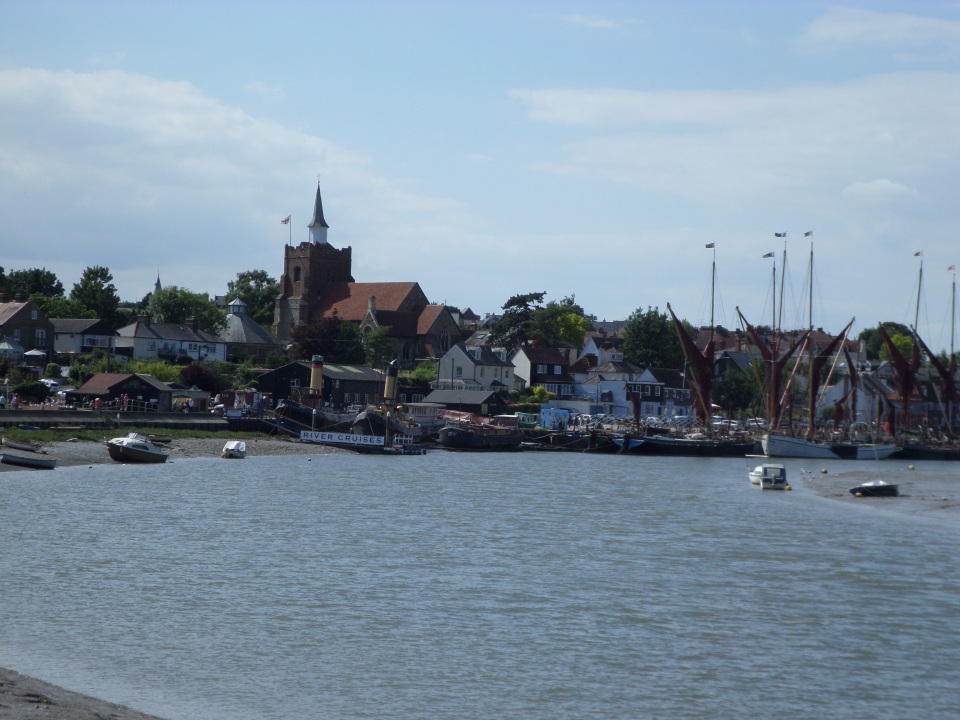
Maldon and Thames barges
The next day, my cousin took me to visit the Stow Maries WWI airfield, where she is a volunteer. It is a treat to visit! After the war, the farmer simply took back the fields, used the facilities as farm outbuildings, and it is only fairly recently that it has been restored (an ongoing project) and opened to the public. There is lots to see, from the restored mess hall, ready room and some hangers with replica WWI aircraft to a small display showing women’s war work and a museum that gives some idea what it was like to live and work here at the time. Across the parade ground, the old generator building is now out of bounds as a Barn Owl habitat.
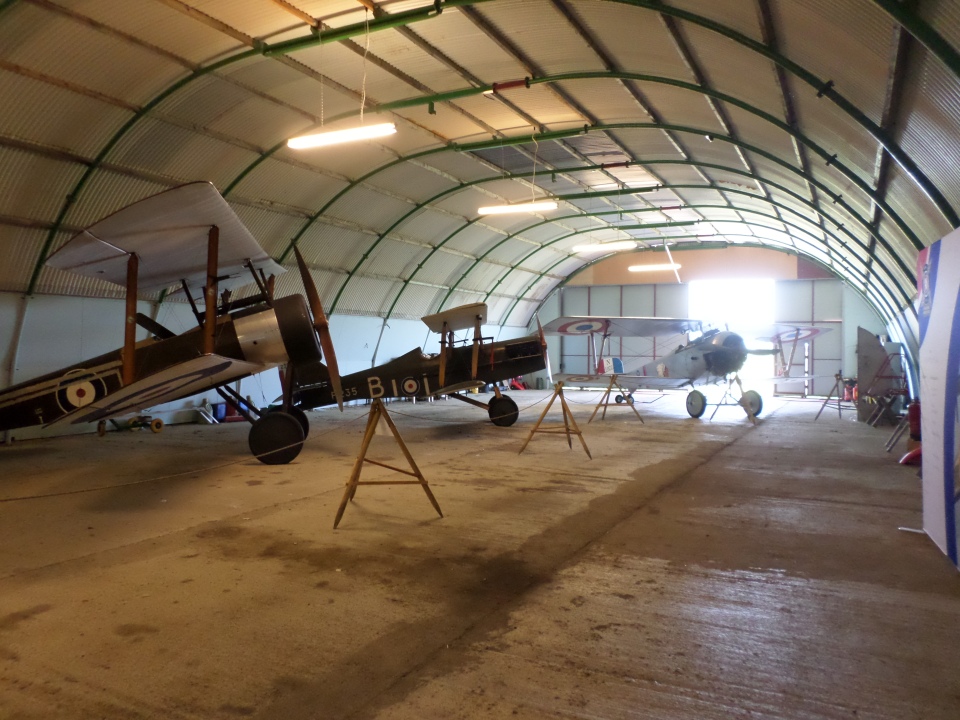
Replica WWI planes
I was intrigued that a young Australian had been posted here. Roy Walter Mouritzen (1897-1917) was too young enlist in Australia, so came to the UK to join up.
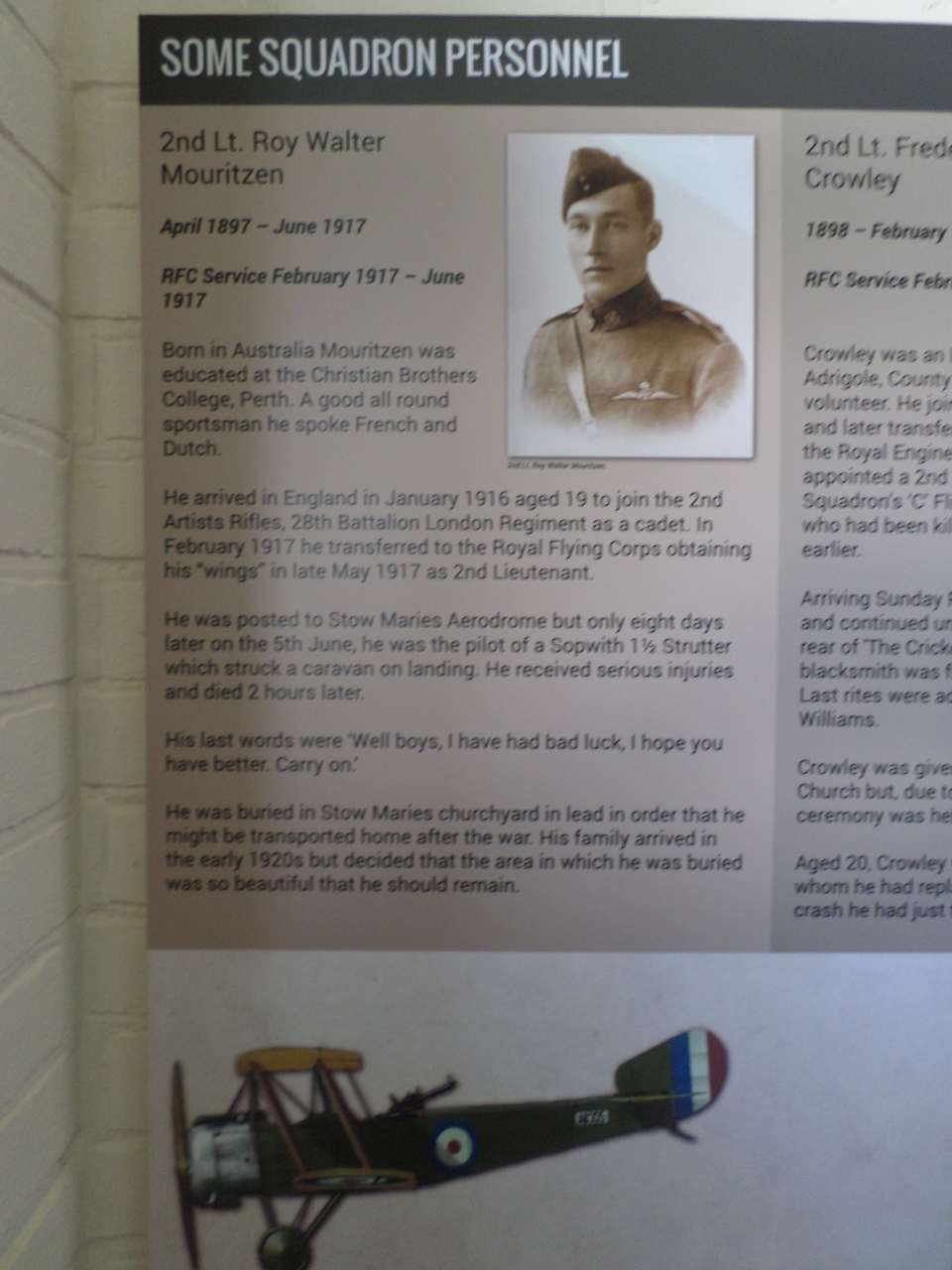
The story of Roy Walter Mouritzen
We walked back and up to the Stow Maries church, indeed a lovely setting.

The Stow Maries churchyard
The following day we visited a marvellous English Heritage property, Audley End. The House itself is huge, with a magnificent great hall and baronial staircase, numerous reception rooms (with Italian paintings), suites, and an upstairs coal gallery, so that the staff did not have to carry coals to make up fires and hot water quite so far through the house. Good idea, I thought. The service area was open to view as well – the kitchens, laundry rooms, a big stable block and a kitchen garden behind the stables. We spent most of the day exploring, including a guided tour round the gardens, which are extensive.
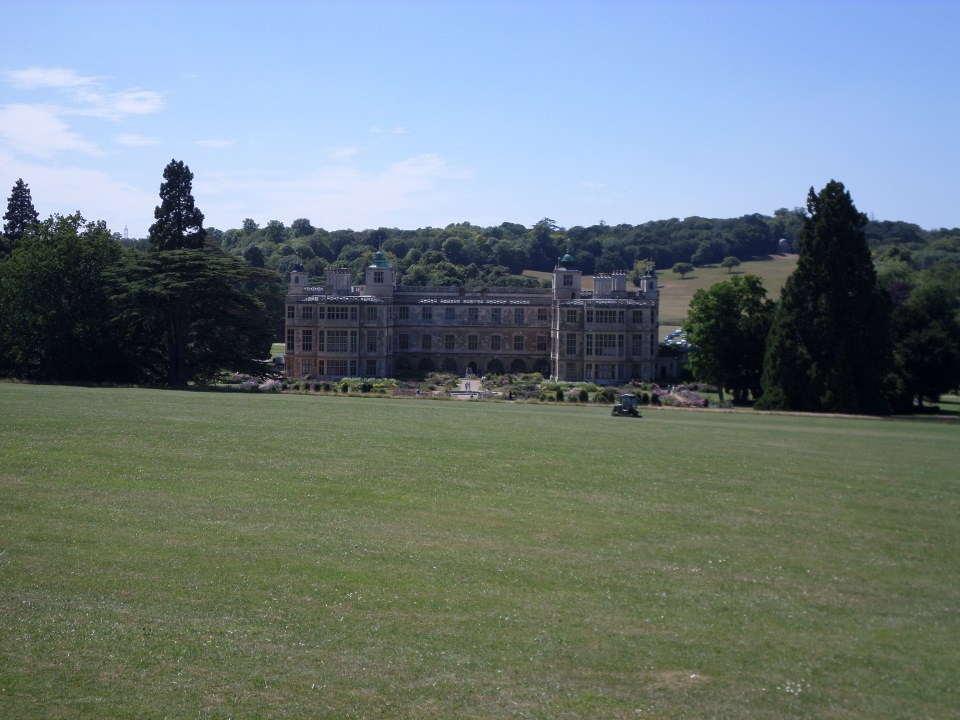
The back of Audley End
My final morning in Essex was spent talking to the family before being delivered to the station. I was off to Dulwich, where I was staying in a B&B just around the corner from the garden party, which was the next day. The garden party was in celebration of the marriage (earlier in the year) of one of my second cousins (on the Friend side) and took place in his parents’ garden. It was a lovely day! Florists came and arranged flowers, caterers catered, a barman and servers made sure we all had food and drink, and dozens of people mingled. I had a long chat with one of my older cousins, who is both my first cousin once removed and my second cousin once removed, because three Stevenson siblings married three Friend first cousins way back in the 1920’s; she is the child of one pair and I am the grandchild of another.
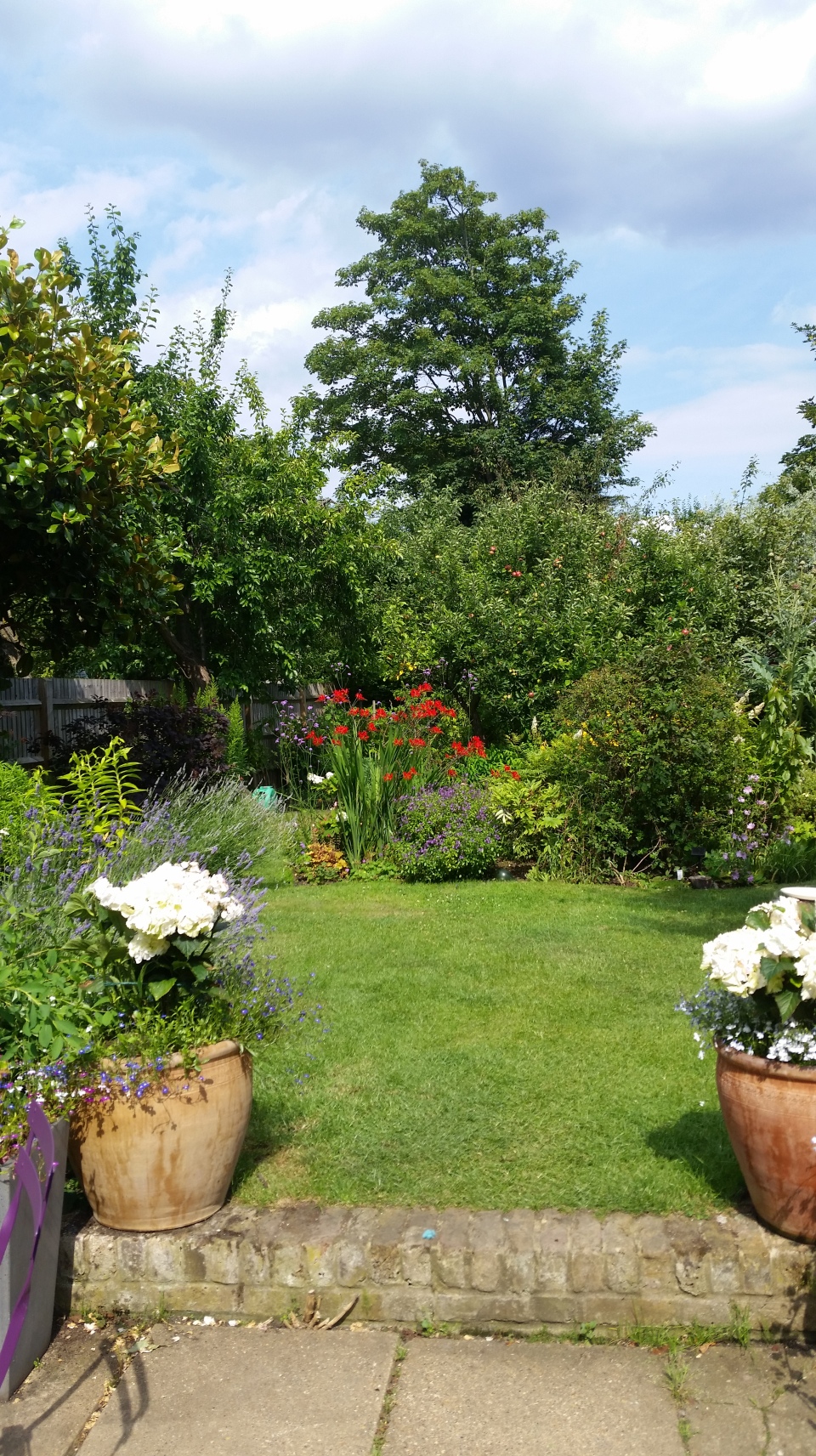
The garden in bloom
I spent the next few days relaxing with relations, mostly dozing in front of WImbledon on the TV, and dining with the family. My last morning in the B&B I got talking about the family history that I am studying through the UTas Diploma, and thus Convicts. It turned out that my hostess has a connection with a chap who collects convict ‘love tokens’ and co-edited a book about them. These tokens were mentioned in the course work and I’d seen a collection of them at the National Museum in Canberra. Small world!
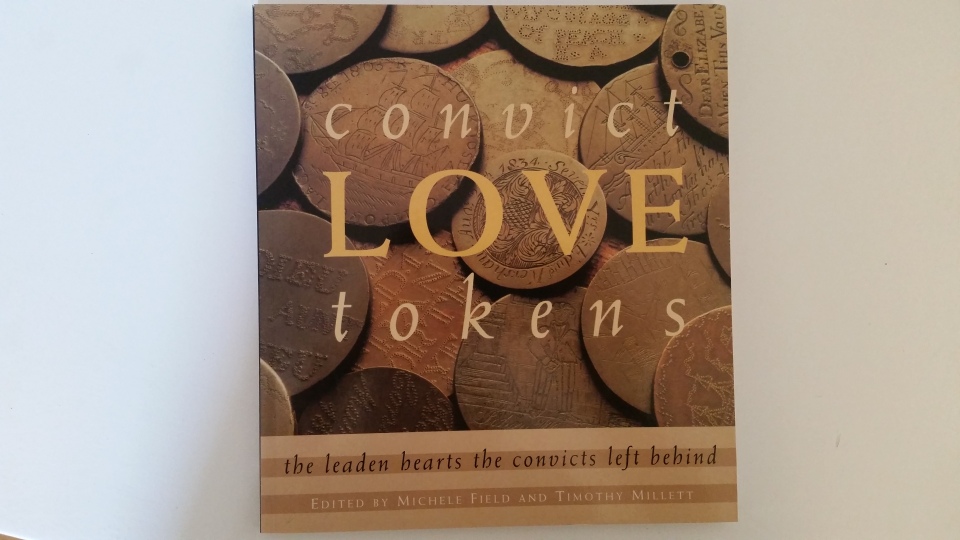
Convict Love Tokens
After a bit more time with relations, I was off to Heathrow and the long journey home. it had been a wonderful holiday, but I was exhausted!
A week in Graz (20-27 June, 2019)
I travelled from Treviso via Vienna to Graz by air, and a taxi took me to the door of my Hotel/B&B located a little to the south of the old city centre of Graz. I settled into my room on the fourth floor, just under the roof – in fact my windows were like hatches in the ceiling. It was rather hot and stuffy at first, but there was a cooling fan which helped.
On Friday morning I walked in to the city centre, found the tourist office and booked myself onto a morning bus tour of the outer part of the inner city and a walking tour of the historic centre in the afternoon. It was a hot and sunny day, an open topped bus and I had forgotten to bring my sunscreen. The tour started from outside the Kunsthaus – the modern art museum. This is an interesting modern building that is nicknamed ‘the friendly alien’ because of its blue rounded shape and the nozzles on its roof.
The bus took a circuitous route round the city, initially following the tree-lined Mur River south, passing the modern synagogue and then crossing the river to a park and Museum of Childhood. We were taken round to the east of the city to an area of exclusive looking villas, and past the Botanic Gardens with large greenhouses. We headed back into the city through one of the remaining gates and a section of medieval wall, passed the Dom (cathedral) and down through some narrow streets, past the Opera House returned to the west bank of the river and finally the Mariahilferplatz (where there is a church dedicated to Our Mary of Help) and finished up back at the Kunsthaus.
I walked back to Mariahilferplatz to look at the church and cloisters, it was a Franciscan establishment. I crossed the river by means of footbridges connected to a cafe floating in the river, the Murinsel. This and the Kunsthaus, were built especially for Graz being the 2003 European City of Culture. The Mur river was very fast flowing, and apparently the standing waves near the Murinsel allow for river surfing!
I found an Italian cafe for lunch, then wandered a bit more, returning to the Tourist Office to join the English speaking city walking tour. The Tourist Office is in the ground floor of the Arsenal, which is now a museum of weaponry. We exited into the courtyard where the symbol of the region, a Styrian Panther, was painted on a door. The Styrian Panther appears all over town and is used as branding on local produce. It is a mythical beast best shown photographically rather than described, which breathes fire, and in some versions emits fire from all bodily orifices.
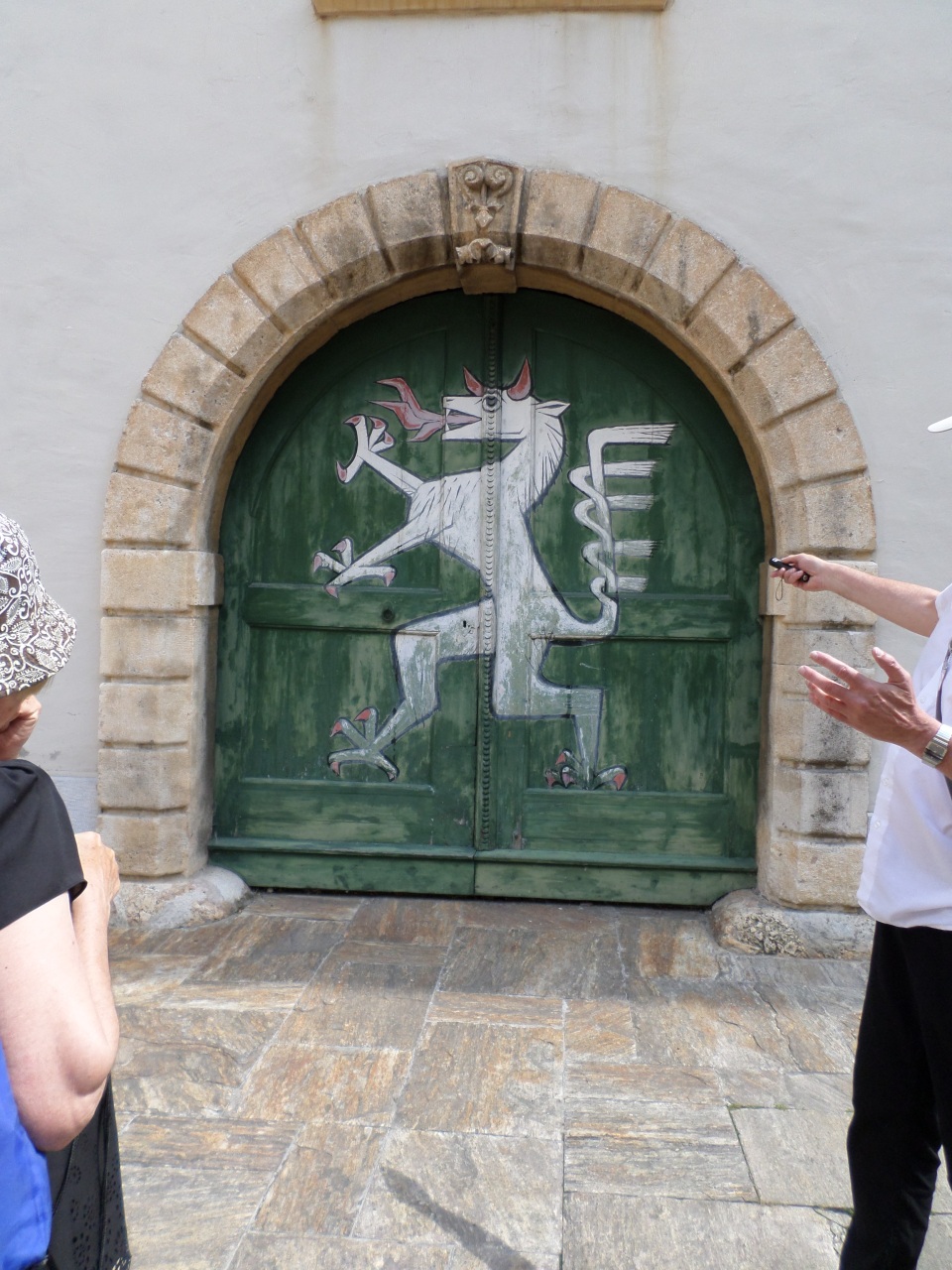
The Styrian Panther
We walked through the courtyard and along the side of the Town Hall to the Hauptplatz (main square) which the Town Hall faces. From here we could see the Schlossberg, the tree covered hill which looms over the city from the north. It once was fortified by a castle that held out against all attacks, but was razed by Napoleon’s army in 1809, after the garrison was ordered to surrender. The towns-folk paid a ransom to preserve the Bell Tower and the Clock Tower, which still stand today.
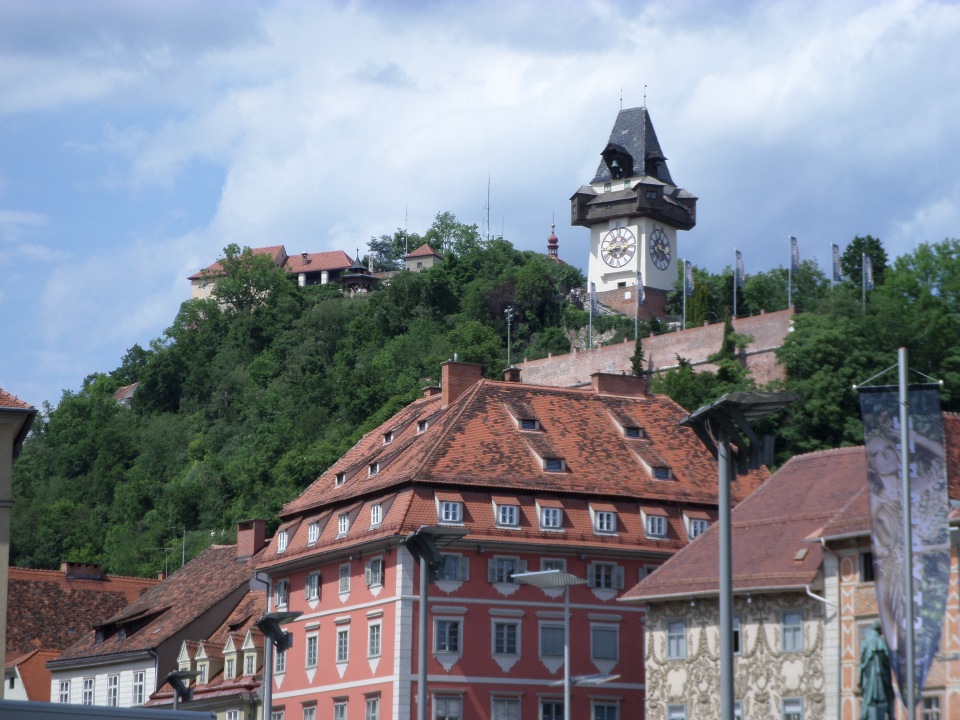
The Schlossberg from the Hauptplatz
We ducked through some alleyways between and under buildings, to a small courtyard where many people had gathered to see the Glockenspiel perform at 3 pm. Originally built to advertise beer, dancing male and female figures appear and twirl to musical bells, with the show ending with a cock crow.
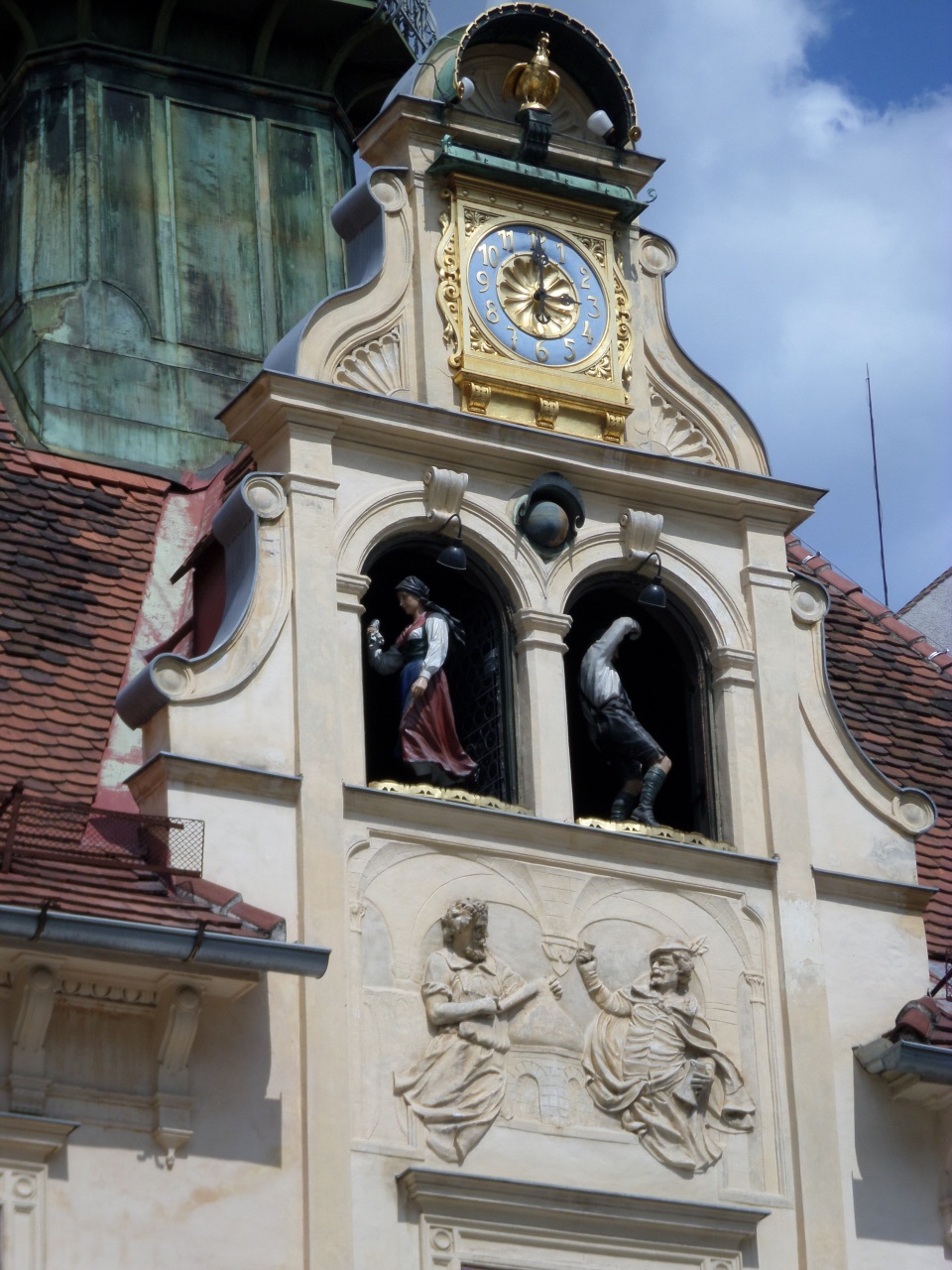
The Glockenspiel
From here we wended our way up to the Duomo and Mausoleum of an Emperor of Austria (Frederick II, I think), but what we were shown was an old fresco on the outside of the Duomo, protected by glass (and therefore not photographable). It depicts the Judgement Day and the three disasters of the middle ages to visit Graz, a plague of locusts, the Ottoman invasions and the Black Death. The remaining population really thought the end of the world was nigh.
Walking further, we were taken into an office building that incorporates part of a castle that used to be on the spot: the famous double spiral staircase. One side goes clockwise and the opposite anti-clockwise, and they intersect at each full turn, so one can move from one to the other. Facing onto the courtyard from which we accessed the staircase, is a painted window that was only found within the structure during building works five years ago!
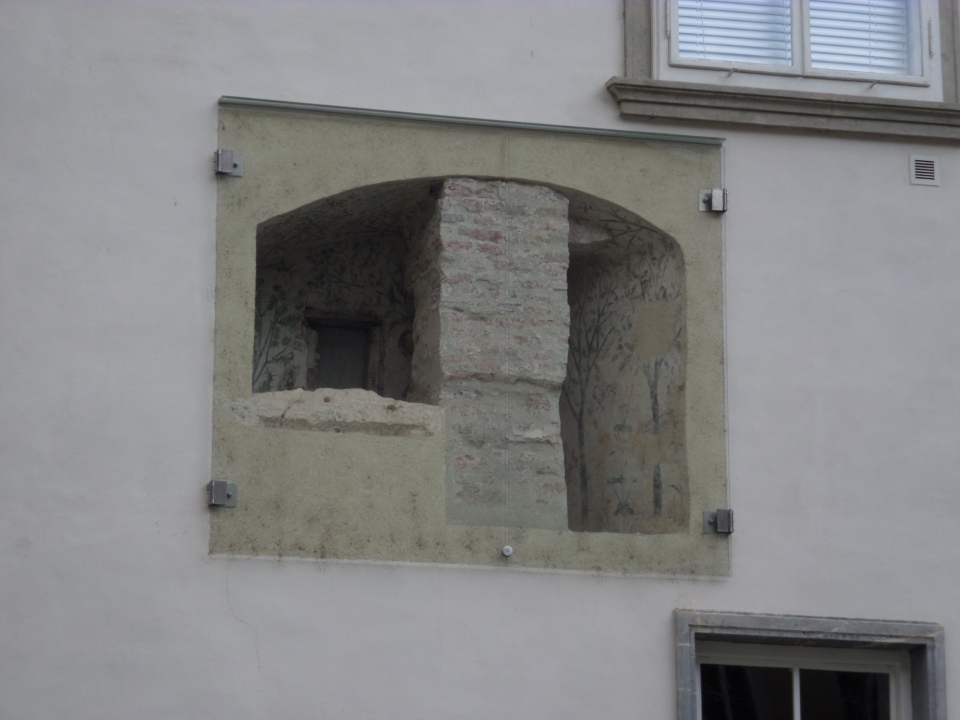
The window
On our way downhill back to the Hauptplatz, we passed a lovely bakery with carved wooden façade, and a display of biscuits (cookies) iced with portraits of Austrian Emperors as zombies. Bizarre.
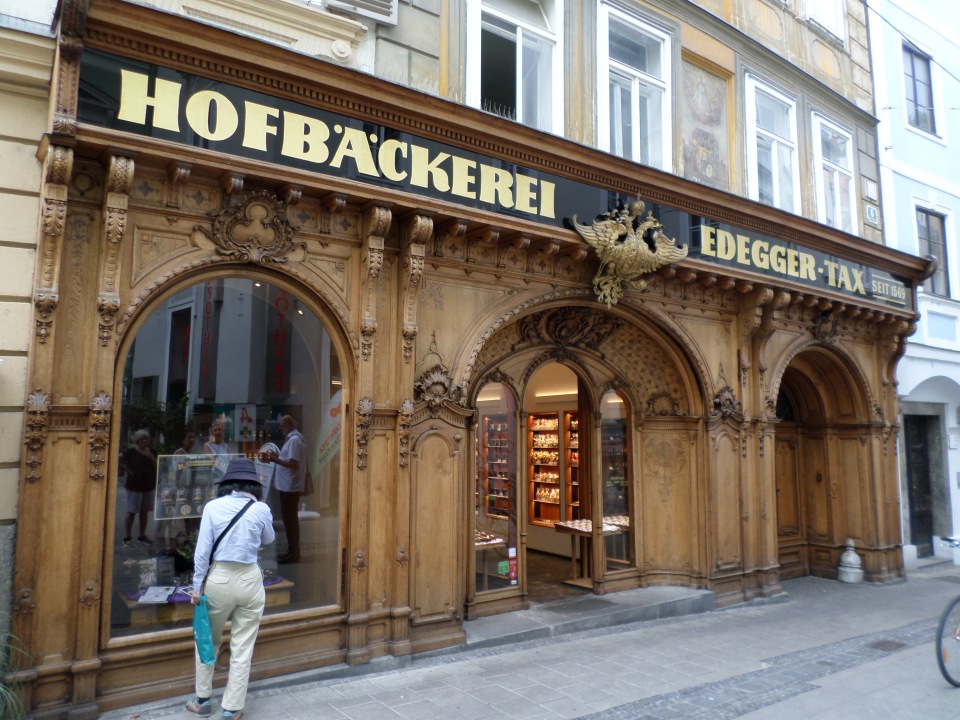
The Bakery
After the tour, which finished on the bridge admiring the Kunsthaus and Murinsel, some of us went up to the rooftop café in a department store. Lovely view over the rooftops – which is one reason that Graz has UNESCO World Heritage listing, its lovely rooftops with dormer windows.
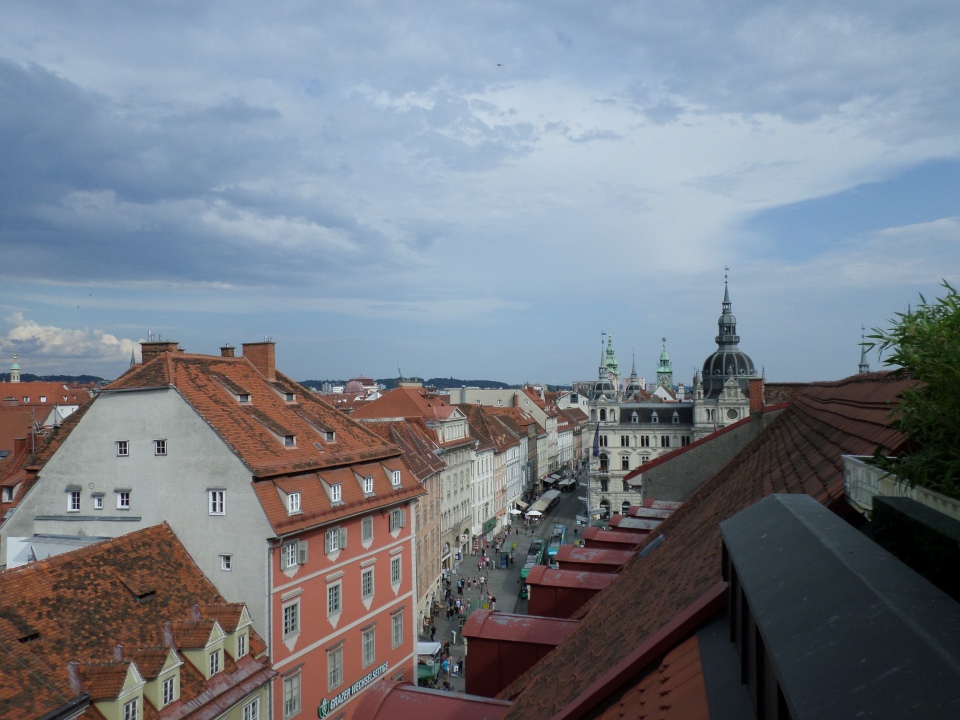
Rooftops
So that was Friday! The weekend was wet and I did very little exploration. Luckily there was a nearby corner shop where I could buy sandwiches and fruit. I caught up with blogging about the last few stops in Italy.
On Monday, I went up to the top of the Schlossberg in a steep funicular rail-car. The view from the top was lovely, it was a beautiful clear and sunny day and I could see up the valley to the mountains in the north. There was also a vista down over the city centre, with an excellent view of the Kunsthaus with all its rooftop nozzles.
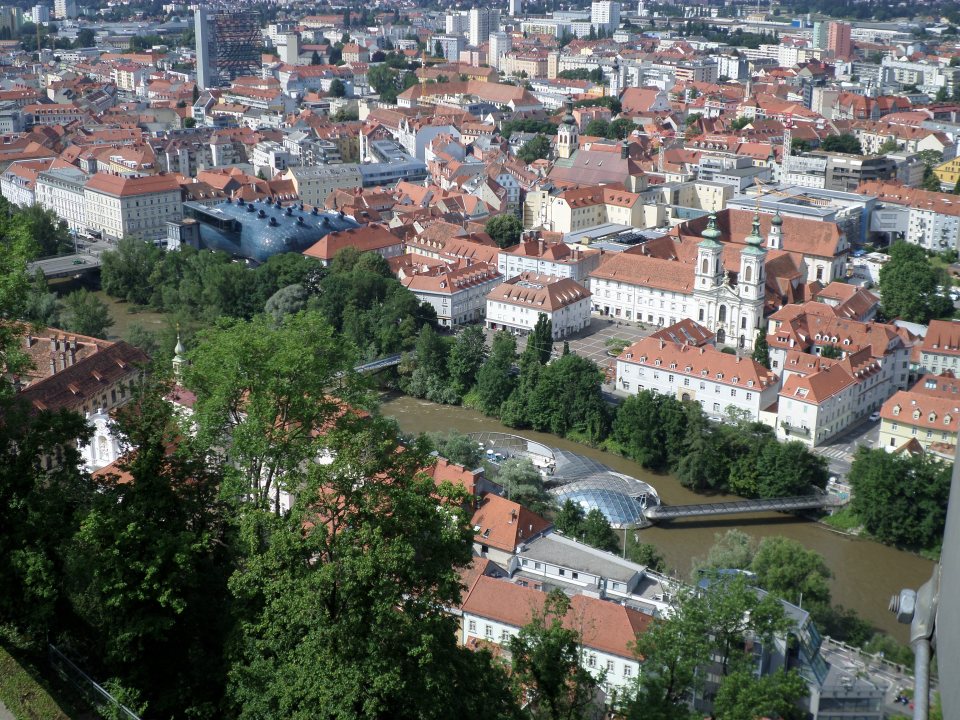
The Kunsthaus, Murinsel and Mariahilferplatz from the Schlossberg
There is lots to see on the Schlossberg, from a lion monument for the general who held out against Napoleon’s forces to a fake Egyptian doorway in a huge wall holding up the cannon bastion. There are the Bell Tower and the Clock Tower, a Chinese pavilion and the deep well that draws on the waters of the Mur, 94 metres down. I finished up with a late lunch at the Restaurant over-looking the city.
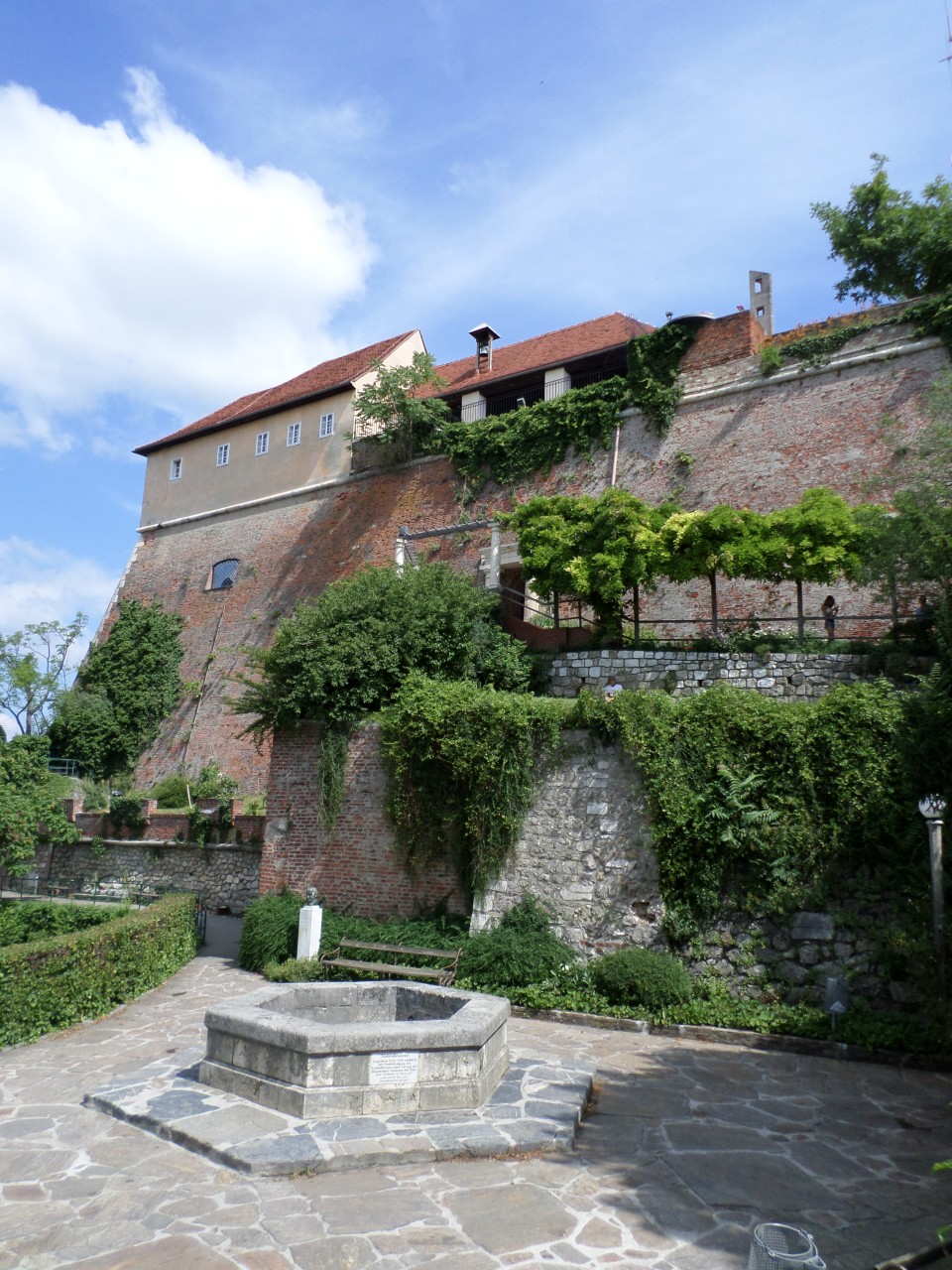
The well and Stable Bastion.
On Tuesday I was up and out early to get the tram to the station, a train to Köflach and a bus to Piber. Schloss Piber is the home of the Lippizaner stud, where are bred the white horses that dance in the Spanish Riding School in Vienna. I had a lovely time looking round, admiring the mares and foals and watching a training session in the indoor school. There was a museum and a church to look at as well. It was a hot but magical day.

Some of the mares and foals
Wednesday was another hot day, which I spent riding on the trams to a couple of outer attractions. First was a trip out to Schloss Eggenberg, a huge amazing palace. I was the only English speaker, so had a private tour! It was closed up for 150 years when inherited by a collateral line that had enough palaces, thanks, so closed the Schloss. Thus it is still in the fashion of the 18th century, with very grand state rooms on the second floor. Outside there is an equally impressive park which includes an archaeology museum. The museum has many relics, but not dated and where there were explanations, only in German. In the far corner of the park, I found a pavilion serving food, so lunch was sorted.

Schloss Eggenberg
Then it was back to the tram, and off to the other end of its run (for which I had to change to a bus as the tramline was being repaired) to get to the Mariatrost. This is a baroque basilica up in the hills, north east of the city. From the end of the tram line it was a climb up 140 steps grouped in sets of ten (for the rosary, perhaps) to the church. It is a place of pilgrimage dedicated to St Mary that houses a ‘gnadenstatue’ or statue of miracles, at the altar. It was very impressive and highly decorated!
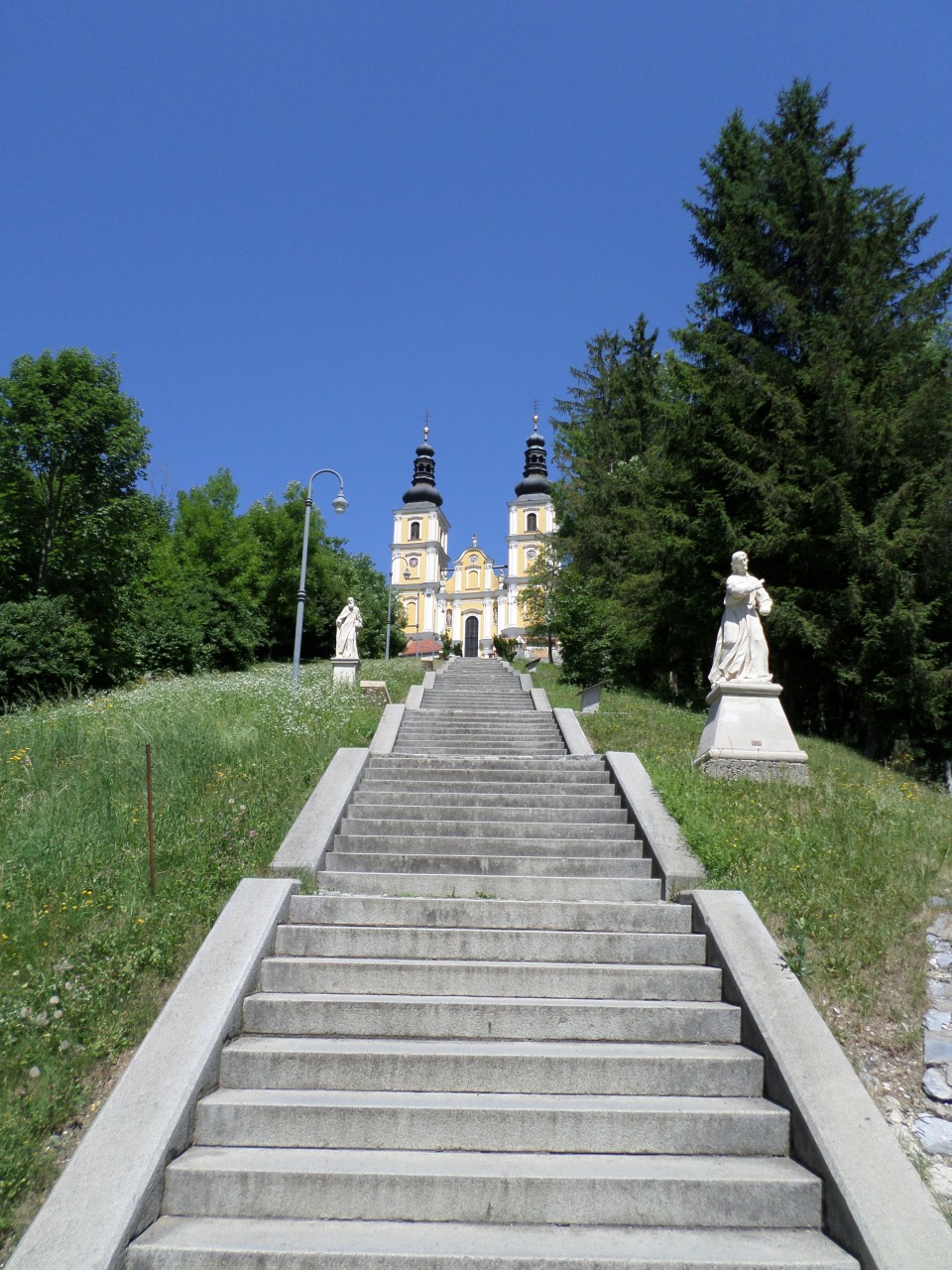
Mariatrost
Back to the city centre and I headed up the Schlossberg again to admire the view again. Finally, I had a quick walk through the Gesichte Museum before it closed and finished the day with a gelato in the Hauptplatz. On my walks to and from the funicular, I went past a hiking shop. It was selling kilts as the best wear for hill walking this season!!
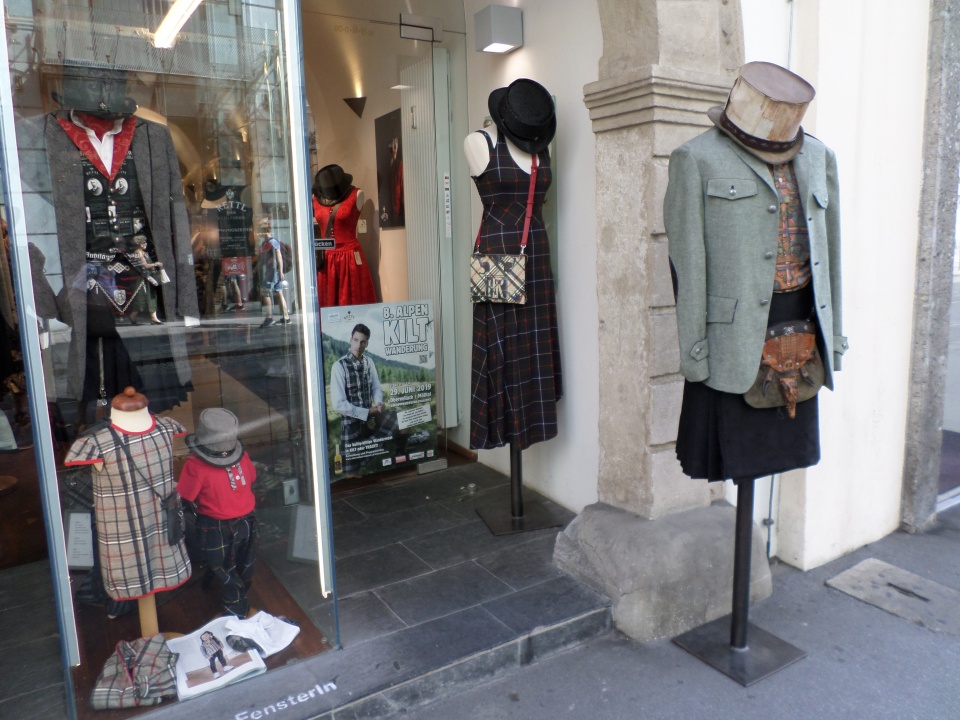
Kilts for sale
On Thursday morning I was picked up by an early taxi back to the airport and off to Vienna and then London. It had been a lovely week exploring Graz. I really enjoyed this beautiful city.
